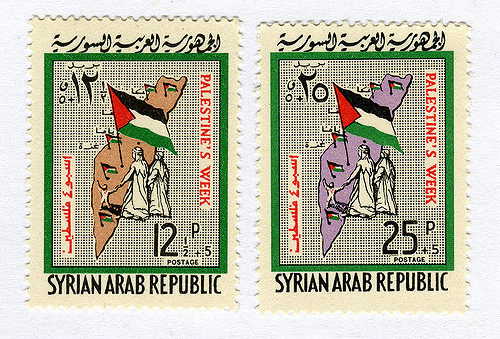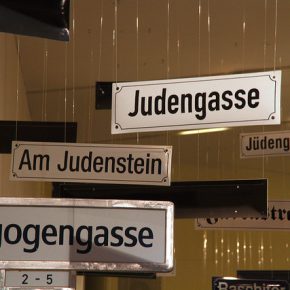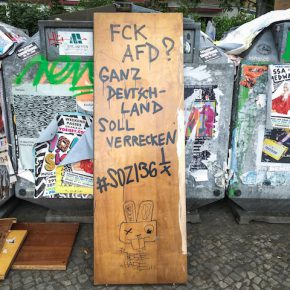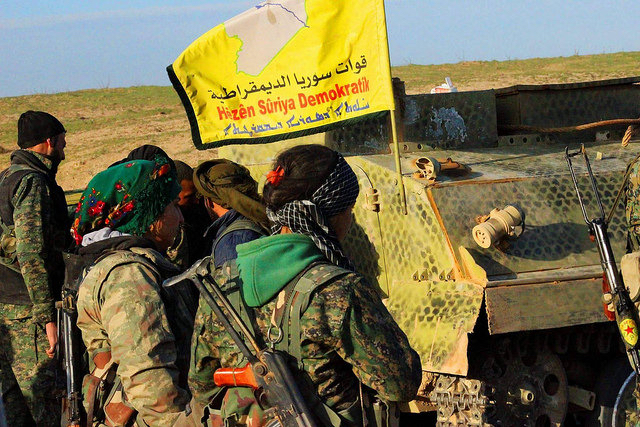As fighting intensifies in the area around Syria’s Khan Eshieh – the so-called “camp of return” – and UNRWA draws parallels with the Yarmouk camp in Damascus, thousands of Palestinian refugees who call Khan Eshieh home face displacement for a second time.
BEIRUT – During the 1948 nakba (or “catastrophe”) – when hundreds of thousands of Palestinians were expelled from their homes in historic Palestine during the Palestine War – up to 100,000 Palestinian refugees fled into Syria. Several thousand took refuge and formed a camp in Khan Eshieh, a town in the farmlands of Western Ghouta, southwest of Damascus.
Being so close to present-day Israel, they believed they would one day be able to return. Palestinian leader Yasser Arafat purportedly once dubbed Khan Eshieh the “camp of return” for that very reason. It’s an idea that can still be heard to this day and which forms part of the camp’s collective identity.
Today the camp, besieged by Russian-backed government forces and on the verge of collapse, has taken on a new significance. It has become symbolic of the fractured – arguably severed – relationship between Damascus and the Palestinians.
The countryside surrounding Khan Eshieh has been an important flashpoint between the government and rebel factions since 2012, and the camp itself has been partially besieged by government forces since 2013. The fighting around Western Ghouta has significantly intensified since May this year, strengthened by Russian air support, and conditions in Khan Eshieh have gone from bad to worse. Increasingly, Russian and Syrian forces have directly targeted the camp and its vital civilian infrastructure, including hospitals, schools and water tanks. At least 31 Palestinians have died since mid-May, including several children, in weekly, sometimes daily, bombardments.
The intensified campaign in the area reached a zenith more than two weeks ago during a successful government offensive to retake the strategic nearby town of Deir Khabiyeh. For months, the town has been on the front line of clashes between the Syrian army and its allies and a range of rebel and Islamist/jihadist groups. The pocket is now split in two, with the sole road linking Khan Eshieh to neighboring Zakiya under the control of the government, rendering the camp “completely besieged” according to activists and monitoring groups. On Sunday, the Syrian Observatory for Human Rights monitoring group reported that local community figures in Khan Eshieh were in reconciliation talks with the Syrian government. On Monday, rebels launched a counter-offensive in the Western Ghouta countryside to break the siege.
The U.N. Relief and Works Agency for Palestine Refugees in the Near East (UNRWA) warned last Friday that there is a “real risk of [Khan Eshieh] becoming another Yarmouk,” referring to the vital, once-bustling Palestinian community in south Damascus that has been besieged and gutted over the past five years.
Based in Sweden, the Palestinian League for Human Rights-Syria (PLHR-Syria), which originally formed in Yarmouk in 2012, said UNRWA’s analogy was “in and of itself, a reason for further concern … in light of what Yarmouk has experienced,” adding that the comparison “between the two camps testifies to the grim reality Khan Eshieh’s inhabitants are facing.”
Indeed, Yarmouk’s fate may provide some hints – and warnings – about the future of Khan Eshieh and the fracturing of the relationship between the Assad government and the Palestinians.
The Unraveling of Yarmouk
Between March 2011 and the end of 2012, tensions ramped up in Yarmouk. Government attacks on southern Damascus neighborhoods pushed many thousands of IDPs (internally displaced persons) into Yarmouk camp, which before 2011 had been home to some 200,000 Palestinian refugees as well as a mix of Syrian and other communities. The influx of IDPs put Yarmouk under obvious strain, but also raised tensions as fighting edged closer to the camp.
Yarmouk’s story from here on is still disputed, with debate often centering on who – regime or opposition – first broke the neutrality of the camp, thereby ending attempts to keep Palestinians out of the conflict and the camps demilitarized.
However, Palestinian factions generally loyal to Assad – most notably the Palestinian Front for the Liberation of Palestine-General Command (PFLP-GC) led by Ahmad Jibril – maintained a strong presence within the camp. From late 2011, these factions distributed weapons among Jibril’s men inside the camp. Their purpose was to project government power, mobilizing residents and attempting to keep Yarmouk’s Palestinians allied with the Syrian government.
Rising tensions, though, partly driven by events elsewhere in Syria (such as the brutal government crackdown on Baba Amr during the Battle for Homs in early 2012, which precipitated a change of public opinion within the camp), actually led to Palestinian anti-government protests inside the camp, bringing the anti-regime movement within and inviting crackdowns: arrests, forcible disappearances and torture.
Newly formed pro-regime lijaan sha’abiyeh (popular committees) established checkpoints and clashed with the Free Syrian Army (FSA) in neighboring areas such as Hajar al-Aswad and Yalda. Not only did this draw the fighting to the very frontiers of Yarmouk, it also created tensions between the FSA and the Palestinians. The FSA, meanwhile, made efforts to gain entry into Yarmouk; these included establishing contacts with anti-government activists and meeting with camp representatives in late 2012. Toward the end of 2012, activists and civil society movements tried to protect Yarmouk’s fading neutrality. But Yarmouk had already become fair game.
On December 16, 2012, a Syrian air force MiG jet bombed Yarmouk and the following day FSA rebels entered the camp (later joined by al-Qaida affiliate Jabhat al-Nusra). Tens of thousands of stateless Palestinians fled their homes for a second time. This is often referred to by Yarmouk Palestinians as their “second nakba,” and with good reason. The vast majority of Yarmouk’s 200,000 former residents have since been displaced, many of them internally, within Damascus and elsewhere in Syria. Tens of thousands have fled to neighbouring countries and to Europe.
In the months that followed, the Syrian government put Yarmouk through a crippling siege that claimed the lives of more than 190 people as a result of starvation and lack of access to basic medical supplies. People attempting to cross government lines were, in some cases, killed or they simply disappeared.
In total, 1,000 Palestinian-Syrians nationwide are currently missing or unaccounted for in government-run detention facilities and security branches, according to the monitoring group Action Group for Palestinians of Syria, which has also documented more than 3,300 Palestinians killed during the course of the Syrian conflict.
Since last year, much of Yarmouk has fallen under the control of the so-called Islamic State.
The Future of Khan Eshieh
There are clear differences between Yarmouk and Khan Eshieh. Khan Eshieh is smaller, geographically and demographically; it’s also more isolated and less strategic in terms of its location. Yarmouk was a crucial strategic link between rural and central Damascus, key to the long-feted Battle for Damascus that never was.
Still, there are some striking similarities. Khan Eshieh is following a broadly similar pattern to Yarmouk: militarization, siege and displacement. Civilians in Khan Eshieh are being punished and drawn into the line of fire while apparently trying to remain neutral. Increasingly, they are being besieged and deprived of basic services and goods. And up to 10,000 Palestinian refugees may soon be displaced once more, with no guarantee that they will ever be able to return – not even to this, the so-called “camp of return.”
Since the fall of Deir Khabiyeh to Assad’s forces last month and with ongoing government offensives in the surrounding countryside, on-the-ground fighting is now much closer to Khan Eshieh. This has merely intensified the siege conditions. Over the past few months, the only route in and out of the camp, the Zakiya Road, has been nicknamed locally the “road of death” because of the risks involved in using it to fetch food, medicine or UNRWA aid.
Last Wednesday night, aid volunteer Khaled al-Khalidi died in an attack on the road; he was the fourth aid worker from Khan Eshieh reportedly killed in October alone. On October 18, government forces shelled a vehicle trying to leave Khan Eshieh by night, killing four Palestinian refugees.
Life inside the camp meanwhile is grinding to a halt.
Khan Eshieh’s last hospital was destroyed by airstrikes weeks ago, killing two patients and two doctors. In early October, shelling hit a girls’ school, injuring students and teachers and prompting the suspension of educational services throughout the camp.
Activists and community leaders have long maintained that Khan Eshieh remains demilitarized and neutral; they say there are no armed factions residing or fighting inside the camp. A statement circulated in early August and signed by all major rebel factions in Western Ghouta stated that Khan Eshieh should remain neutral. On August 22, the head of the local council in Kisweh, a neighbouring town under government control, also visited Khan Eshieh to survey conditions and, presumably, ascertain whether or not there were actually fighters in the camp, according to pro-opposition media. The fact that the delegation was even able to go inside Khan Eshieh safely seems telling.
Pro-government Palestinian voices have disputed these claims. Ahmad al-Majdalani, an official with the Palestinian Liberation Organization (PLO), told al-Quds TV that there must be opposition fighters inside because Khan Eshieh is besieged. “If there are no insurgents, then why is the camp besieged?” Majdalani said. “Who is hindering the access of UNRWA?”
Khan Eshieh activists condemned this statement, calling it “direct incitement against us as civilians” by Majdalani, “as well as the betrayal of his duty as a prominent Palestinian supposed to work for the benefit of his people.”
If the Syrian government continues its push on rebels in Western Ghouta, Khan Eshieh’s neutrality could come under even more pressure. Rebels may actually enter the camp, putting residents in the direct line of fire. And if fighters were to enter Khan Eshieh, rather than accept the kind of forced evacuation agreement seen recently in other rebel pockets around Homs and Damascus, it would spell disaster for the camp: siege, destruction and possibly the permanent displacement of its former residents.
All too often, this kind of catastrophe is met with silence, attracting little media attention or concern from the international community. Yarmouk was bombed and starved for years, but it was not until the arrival of ISIS last April that the world really first heard its name.
And so Khan Eshieh sits on the brink of yet another Palestinian-Syrian nakba, with the potential to become another Yarmouk.
This article originally appeared on Syria Deeply, and you can find the original here. For important news about the war in Syria, you can sign up to the Syria Deeply email list. Photograph courtesy of Magne Hagesæter. Published under a Creative Commons license.





